What are Systemd (Daemon) Services
What is systemd (daemon)?
Systemd (daemon) was designed to conquer the faults of init. It is a process that runs in the background, and it starts in parallel. This in turn reduces the time taken to boot and computational overhead. As compared to init, systemd (daemon) has a lot of features.
- Systemd is the part of RedHat enterprise Linux 8 that is responsible for the start and stop services. Not only services but a variety of other items as well.
- The systemd system and service manager are used to start stuff, the stuff is referred to as units.
- Units can be many things. One of the most important unit types is the service.
- Services are processes that provide specific functionality and allow connections from external clients coming in, such as SSH service, the Apache web service, and many more.
- Apart from services, other unit types exist, such as socket, mount, and target. To display a list of available units, type systemctl -t help.
Command – systemctl -t help
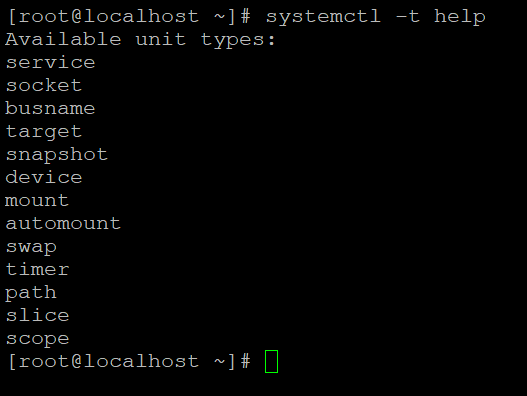
Available Units Type
Units’ files can occur in three locations
1st – /usr/lib/systemd/system
It contains default unit files that have been installed from RPM packages. You should never edit these files directly.
2nd – /etc/systemd/system
It contains custom unit files. It may also contain files that have been written by an Administrator or generated by the systemctl edit command.
3rd – /run/systemd/system It contains unit files that have been automatically generated.
Difference Between RHEL-6 And RHEL7&8
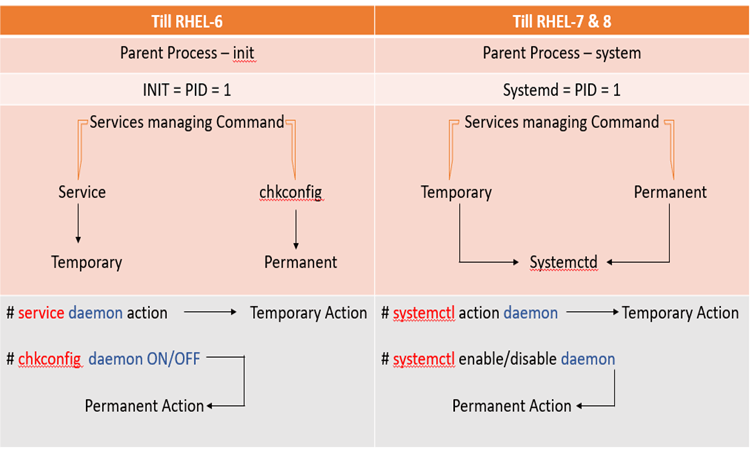
Some More Important points
– A daemon or unit is a program that is used to start and stop any services in Unix/Linux-based operating systems.
– In Linux OS, every server or service has its own personal daemon to control it.
– We can easily start and stop any services using Linux based command without rebooting the machine.
Some Server And It’s Daemon Name

List Of Active Services In Systemd
Command – systemctl – -type=service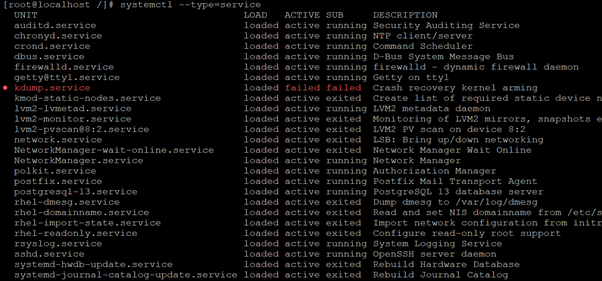
Let us explain the output
UNIT: name of the systemd unit.
LOAD: Whether the unit configuration file has been parsed by systemd.
ACTIVE: high-level state of the unit.
SUB: low-level state of the unit. An active unit can be in the running state or excited state. This value depends on the service type.
DESCRIPTION: it is all about description.
As you can see, you can list the loaded services on your Linux system. But an active systemd service could be running or could be exited (after running successfully).
List Of All The Running Systemd Services
The active state can also have a sub-status like running, exited, etc. you can use the same –state flag with the sub-state.
To list the running systemd services, use the –state=running flag like this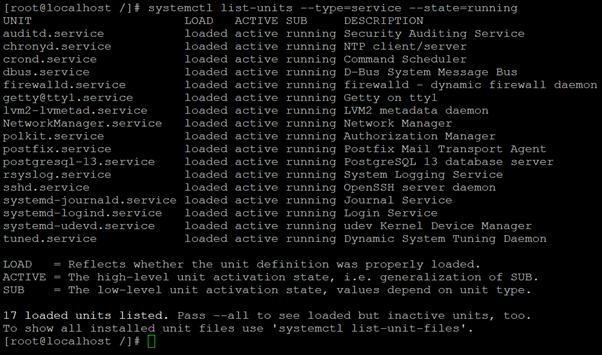
Loaded Systemd Services Including The Inactive
Systemctl command only displays the loaded and active units. If you want to list all the loaded services including the inactive ones, use the –all flag.
Command – systemctl list-units –all –type=service
List of all the installed systemd services (even if they are not loaded)
Command – systemctl list-unit-files – -type=service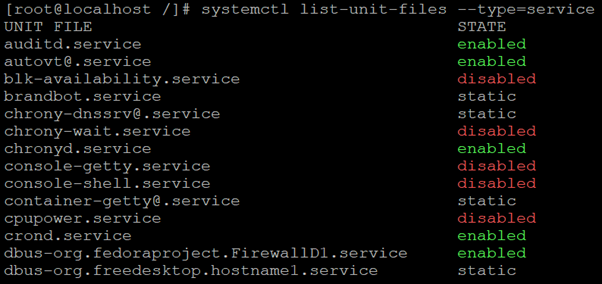
In these services, there are other concepts too that you can see on your manual page. It shows up when you type (man systemd). You now have a better understanding of listing systemd services. We do hope you learned a few new things about systemd and systemctl command. We’ll bring more for you and to read about other technologies, you can visit our blog.
Our team at Zindagi Technologies is of experts and techs who have a strong command of their specializations. So, if you are planning to expand your business in terms of Cloud, Data Center, Managed Services, IT Consulting, IoT, Network Automation, and Security Service then give a call at +919773973971.
Author
Deepak Kumar
Linux and Server Administrator
